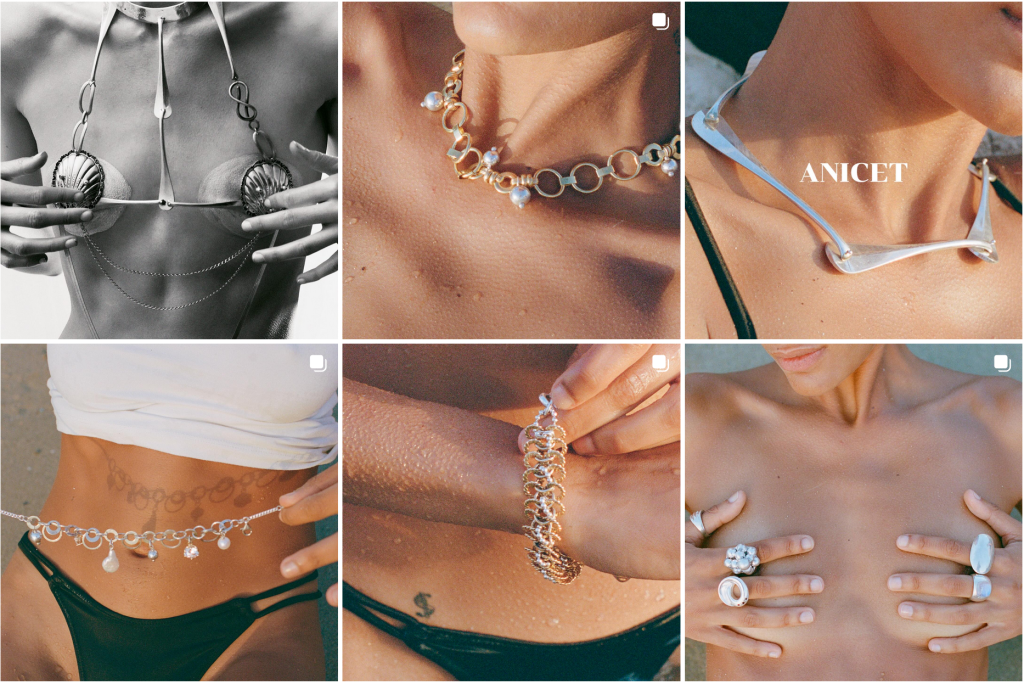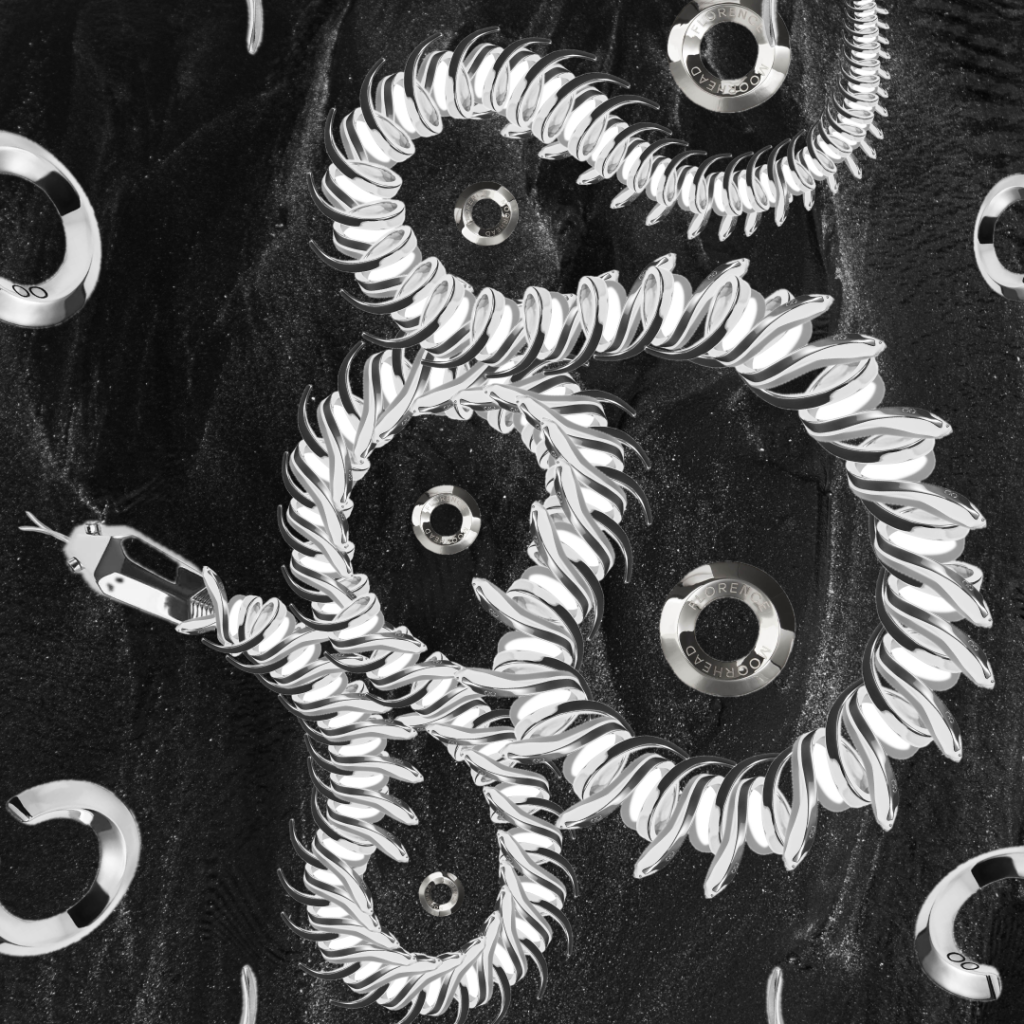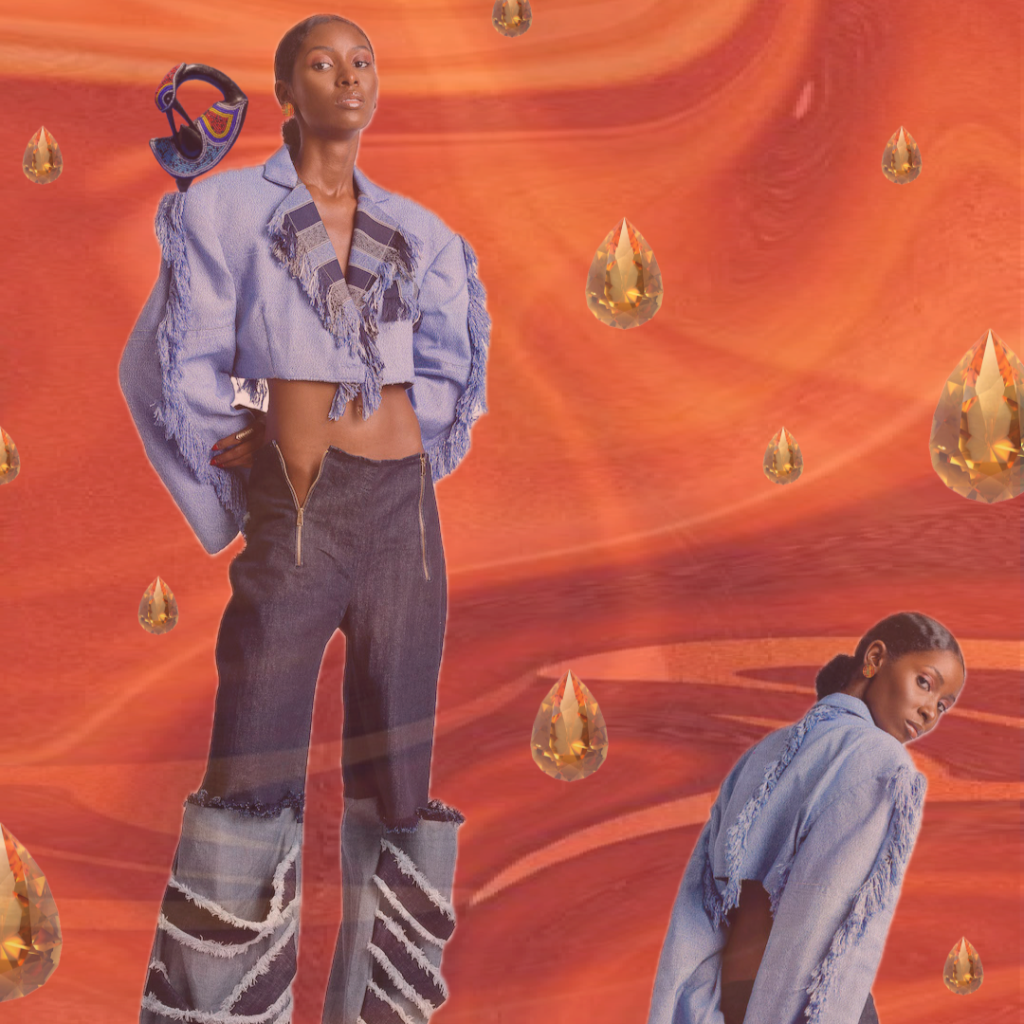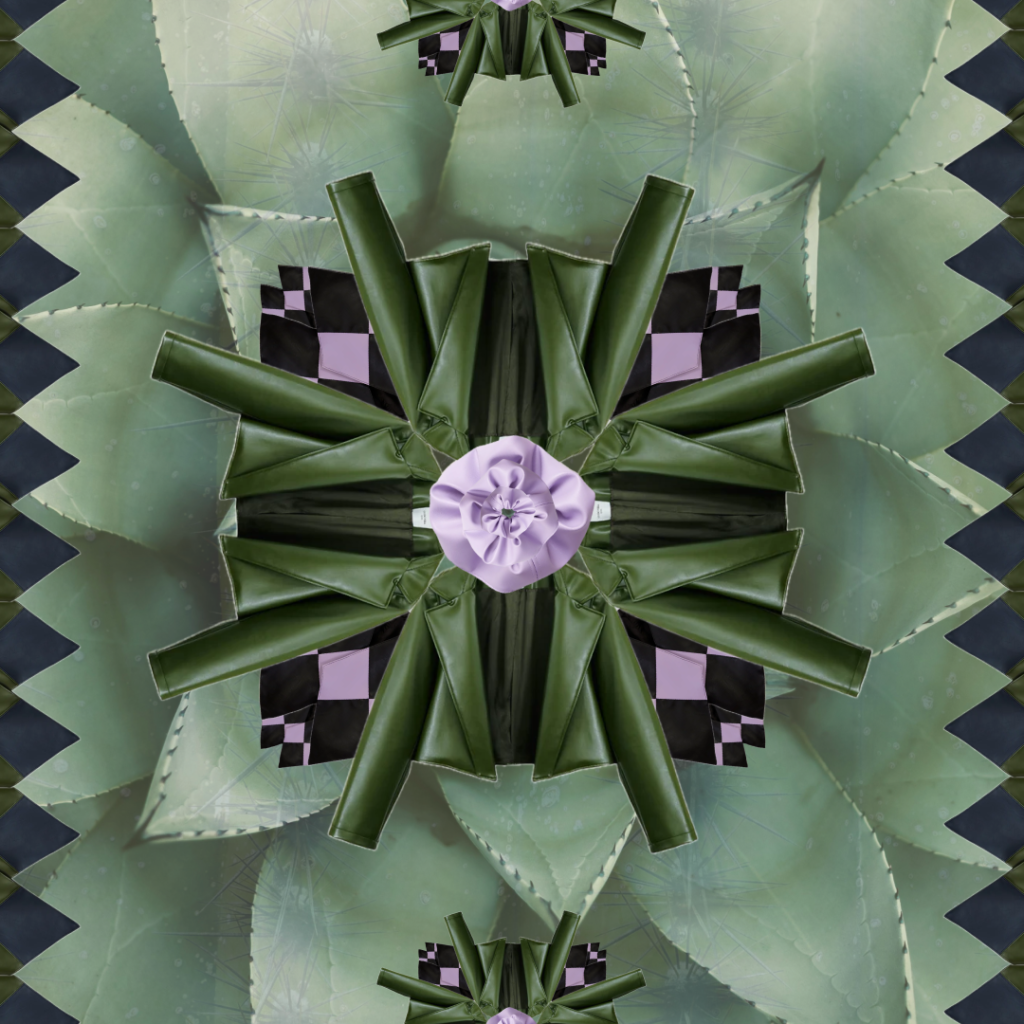Why is upcycling attracting a new generation?
Upcycling, a concept increasingly present in fashion, is captivating a new generation of consumers who value both style and sustainability. Brands like Boyedoe exemplify this trend by transforming existing materials into unique and responsible creations. Yet, this approach is no longer confined to fashion, it is also making its way into the world of jewelry. Brands like Anicet are seamlessly blending tradition with innovation, while upcycling is transforming the landscape of jewelry design. With its ethical and sustainable values, it is gaining popularity among those seeking authenticity and individuality. Choosing an upcycled piece of jewelry means opting for a unique item that combines artisanal craftsmanship with contemporary design, all while supporting an environmentally conscious approach.
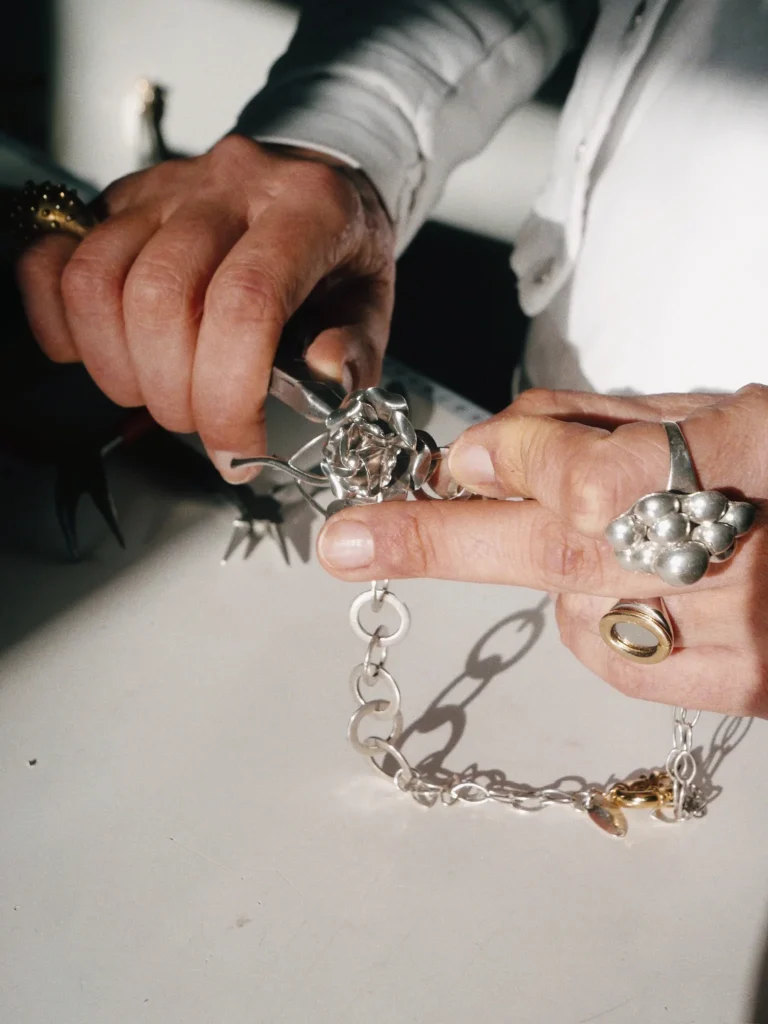
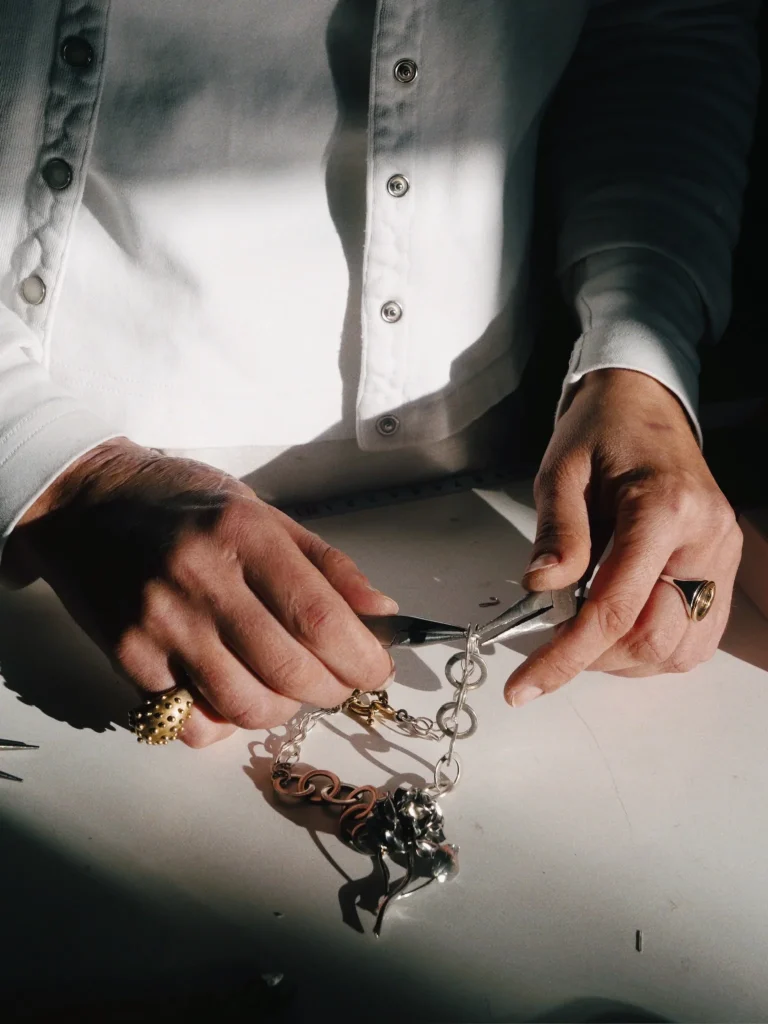
The Rise of Upcycling: A Generational Phenomenon
The consumption landscape is undergoing a revolution driven by younger generations hungry for ethics, sustainability, and authenticity. Studies have shown a marked shift over recent years: in 2021, a YouGov survey revealed that 52% of 18–34-year-olds favored reusable products, and 58% preferred buying from responsible businesses. By 2023, this trend had strengthened, with 72% of French consumers committed to more responsible consumption, according to Greenflex.
But this shift isn’t just about environmental concerns. Younger consumers are seeking creations that tell a story and reflect their values. Gone are the days of “blending in”; today, individuality is celebrated, with unique, meaningful objects taking center stage.
Upcycling exemplifies this new approach, breathing new life into existing materials while merging sustainability with originality. Each piece tells a story of its own, resonating with a generation eager to make thoughtful, impactful choices.
Anicet: Where Jewelry Meets Humanity
Anicet reimagines jewelry by fusing artisanal craftsmanship with deep human values. Founded by Elia Pradel, the upcycled brand draws its inspiration from vintage materials like gold-plated metals and silver to craft unique, authentic pieces imbued with history.
Originating from Guadeloupe, Elia Pradel brings an intercultural and human-centered perspective to her designs. The concept of the “link” is central to Anicet’s creations, symbolizing a double connection between the past and present, tradition and modernity, while bridging diverse cultures.
By working exclusively with existing precious materials, Anicet demonstrates that “starting with what already exists” can result in extraordinary creations.
Each piece is handcrafted in Paris at the Bureau of Design, Fashion, and Crafts (BDMMA) incubator in Bastille, and is supported by the French Ministry of Culture. This commitment to artistry, sustainability, and cultural heritage ensures that each jewelry creation is both timeless and meaningful.
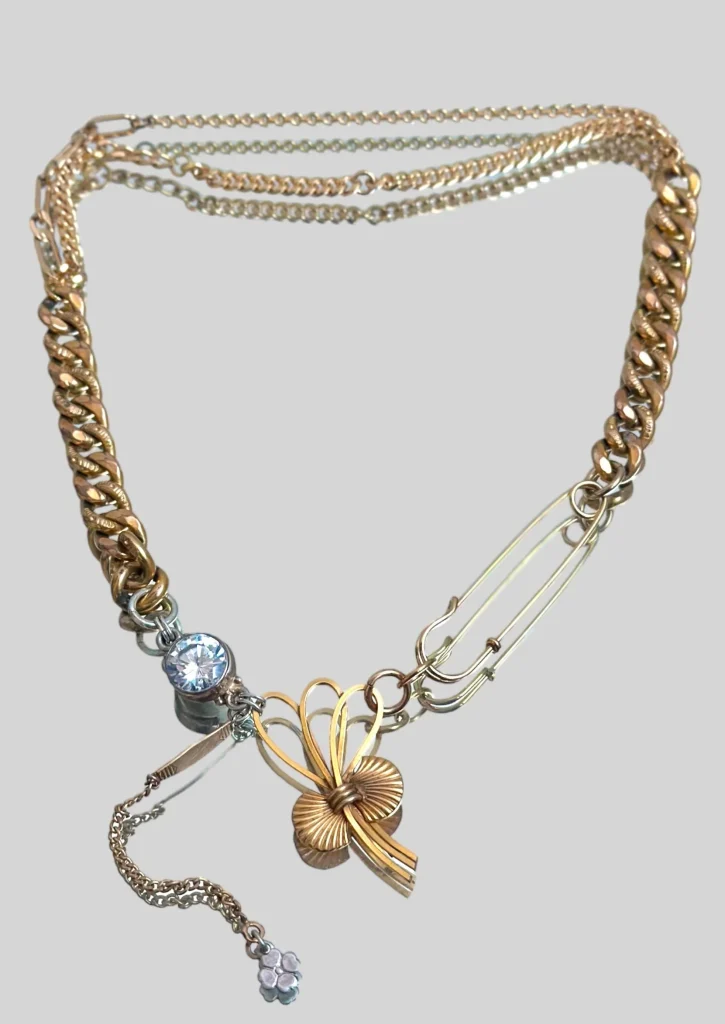
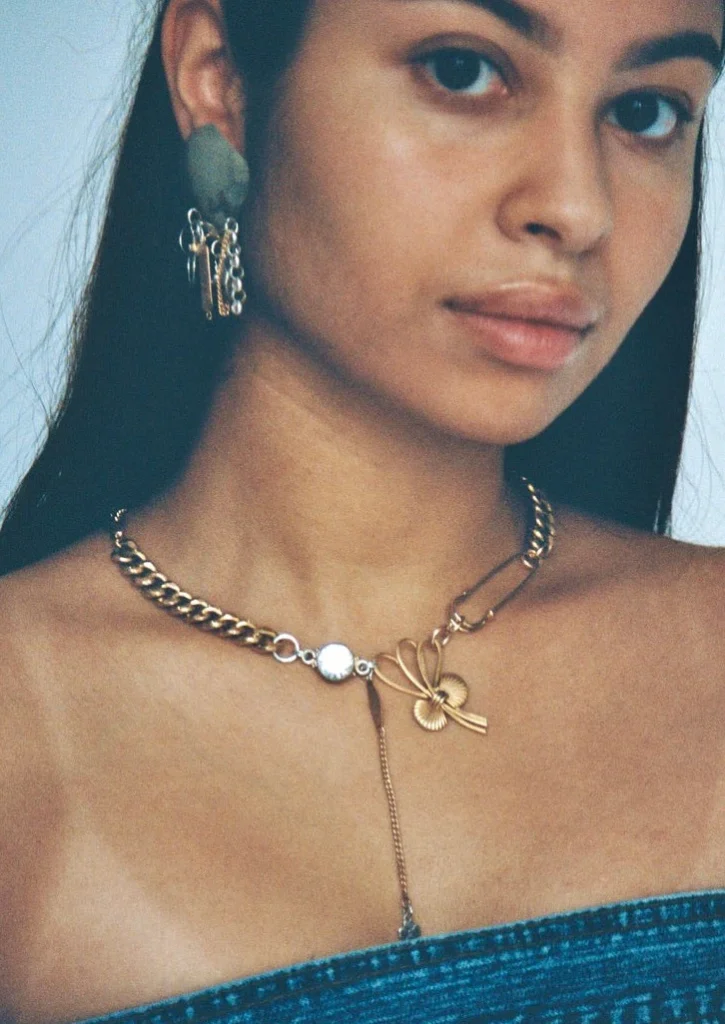
Why Are Young Generations Embracing Upcycling ?
A Story to Tell
Each piece of jewelry is unique, carrying a personal or cultural significance. Unlike mass production, often deemed impersonal, these creations tell a story: the story of their origin, their artisan, or the person who wears them. This approach particularly appeals to an audience seeking meaning and emotional attachment to their possessions.
Exclusivity and Customization
Uniqueness is a key factor for today’s consumers, especially among younger generations. They prioritize rare and original pieces that stand apart from standardized trends. Owning a unique piece of jewelry means showcasing a distinct personality and style, far removed from mass-produced designs.
Ethical and Responsible Commitment
Buying jewelry also reflects a choice of values. The trend is now “less but better”: consuming less frequently, but focusing on brands that share an ethical vision. Whether it’s upcycled materials, artisanal processes, or a stronger commitment to the environment, ethical jewelry is emerging as a sustainable and respectful alternative.
Upcycling is redefining contemporary jewelry. Consumers are no longer solely seeking beauty or prestige, but also objects that carry a deeper meaning and are rooted in shared values.
The Future of Upcycling: When Stories and Ethics Redefine Luxury
Today, owning a valuable antique object, filled with history and authenticity, represents the new luxury. Brands like Anicet play a crucial role in educating consumers and shifting mindsets. By focusing on upcycling, the history of materials, and the creation of unique jewelry, they offer much more than just a product: they transmit values of authenticity, sustainability, and responsibility. These initiatives challenge the traditional model of mass consumption and encourage a return to more thoughtful choices, where quality and ethics take precedence over quantity.
Buying antique, unique, or reinvented products has become a new way to consume luxury, with added ethical and historical value.
